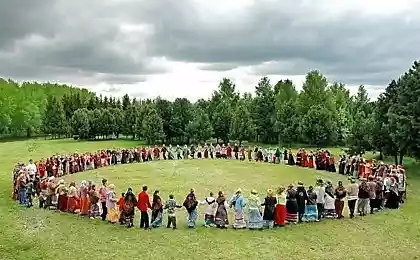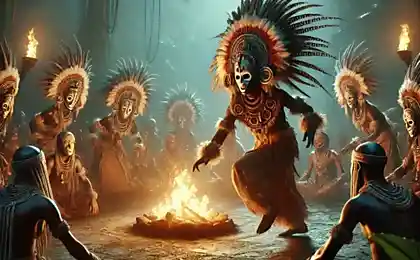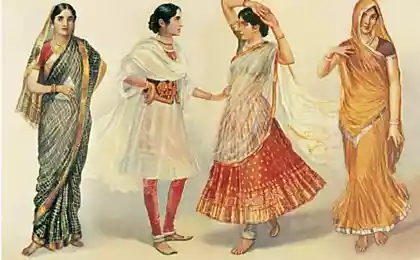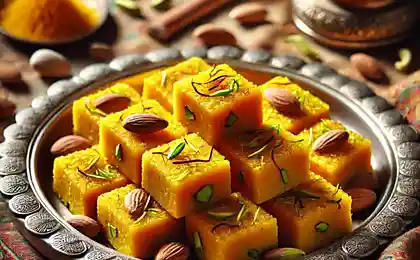226
What Indian traditions deserve attention
Studying the unusual traditions of different countries, "Site" I decided to write about the most remarkable customs and habits of the people of India.

Today we will tell you what rules of conduct were adopted by Indians hundreds of years ago and which of them continue to exist today.
As in all countries, the formation of Indian traditions took hundreds of centuries. Their formation was especially influenced by the peculiarities of the religions and cultures of the invaders of the Indian territories during numerous wars.
169350
Each new settlers brought something different to the culture of India, which is why the modern culture of this country is so diverse and unusual. It is not surprising that many traditions of the Indians are now similar to those of the Persians, Arabs and Turks, as they have been the most influential in the development of these traditions in India.

In many countries, at certain times of the year (most often in summer) you can get to the Holi festival. However, not everyone knows that the festival of colors is a traditional Hindu holiday. Indians celebrate it in the spring.

As at festivals held in other countries, Indians pour water on each other, which is added to paint and sprinkled with colored powders. However, at no festival can you feel the special atmosphere that prevails on the streets of India during the celebration.

As for the behavior of Indians, most of them are associated with the observance of purity, both physical and spiritual. For example, taking food from Indians is accepted only with the right hand, since the left is considered unclean.

For a Russian person, the greeting used by Indians when meeting can also seem unusual. Handshakes are rarely used here and only in cases where people want to show their special friendly attitude to each other.
Often Indians simply connect their palms, raise them to the chin, nod and say the word “namaste”.

It is interesting to know that the names of Indians also differ significantly from ours not only in sound, but also in structure. The name of an Indian resident consists of his own, the name of his father and the name of the caste or village of residence.

There is a special custom for women. After the marriage, a woman leaves her own name, but her documents also record who she is. It's hard to imagine how our ladies would put up with such a rule, isn't it?
450384
If you are one of those who are going to visit this beautiful country, it is worth considering that the manifestation of negative emotions in public places, as well as kissing and hugging in public are strictly prohibited. So, unlike melancholic and phlegmatic, visiting sanguine and choleric people in India will have a very difficult time.

Not to mention how the people of India cope with the movement of weights. Manual movement of weights It is not typical for the indigenous people, they are used to keeping the burden on their heads.
In India, you can even find a person who is able to lift a motorcycle weighing 3 times more than his own on his head, without experiencing any kind of experience. pain when lifting weight. The wonders of endurance and balance demonstrate not only men, but also women.

Indian cuisine also has a number of features. They were all influenced by different religions. In the north of the country, mainly Muslims eat meat, and in the south, Indians prefer vegetarian dishes.
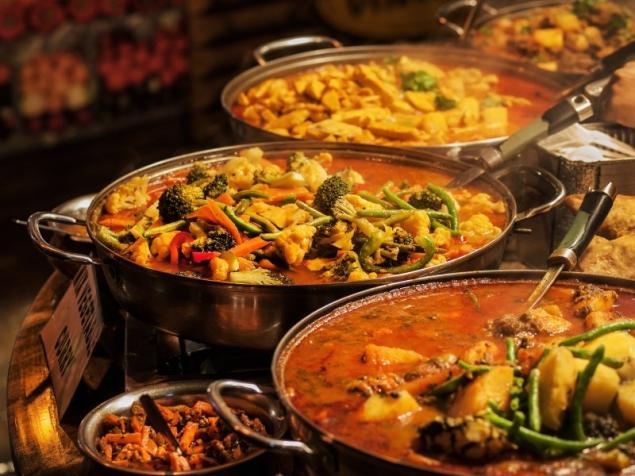
Each region of India has its own distinctive features, but they all share a common history. Perhaps that is why the culture of India cannot leave indifferent any tourist visiting this bright and unusual country.

Today we will tell you what rules of conduct were adopted by Indians hundreds of years ago and which of them continue to exist today.
As in all countries, the formation of Indian traditions took hundreds of centuries. Their formation was especially influenced by the peculiarities of the religions and cultures of the invaders of the Indian territories during numerous wars.
169350
Each new settlers brought something different to the culture of India, which is why the modern culture of this country is so diverse and unusual. It is not surprising that many traditions of the Indians are now similar to those of the Persians, Arabs and Turks, as they have been the most influential in the development of these traditions in India.

In many countries, at certain times of the year (most often in summer) you can get to the Holi festival. However, not everyone knows that the festival of colors is a traditional Hindu holiday. Indians celebrate it in the spring.

As at festivals held in other countries, Indians pour water on each other, which is added to paint and sprinkled with colored powders. However, at no festival can you feel the special atmosphere that prevails on the streets of India during the celebration.

As for the behavior of Indians, most of them are associated with the observance of purity, both physical and spiritual. For example, taking food from Indians is accepted only with the right hand, since the left is considered unclean.

For a Russian person, the greeting used by Indians when meeting can also seem unusual. Handshakes are rarely used here and only in cases where people want to show their special friendly attitude to each other.
Often Indians simply connect their palms, raise them to the chin, nod and say the word “namaste”.

It is interesting to know that the names of Indians also differ significantly from ours not only in sound, but also in structure. The name of an Indian resident consists of his own, the name of his father and the name of the caste or village of residence.

There is a special custom for women. After the marriage, a woman leaves her own name, but her documents also record who she is. It's hard to imagine how our ladies would put up with such a rule, isn't it?
450384
If you are one of those who are going to visit this beautiful country, it is worth considering that the manifestation of negative emotions in public places, as well as kissing and hugging in public are strictly prohibited. So, unlike melancholic and phlegmatic, visiting sanguine and choleric people in India will have a very difficult time.

Not to mention how the people of India cope with the movement of weights. Manual movement of weights It is not typical for the indigenous people, they are used to keeping the burden on their heads.
In India, you can even find a person who is able to lift a motorcycle weighing 3 times more than his own on his head, without experiencing any kind of experience. pain when lifting weight. The wonders of endurance and balance demonstrate not only men, but also women.

Indian cuisine also has a number of features. They were all influenced by different religions. In the north of the country, mainly Muslims eat meat, and in the south, Indians prefer vegetarian dishes.

Each region of India has its own distinctive features, but they all share a common history. Perhaps that is why the culture of India cannot leave indifferent any tourist visiting this bright and unusual country.





